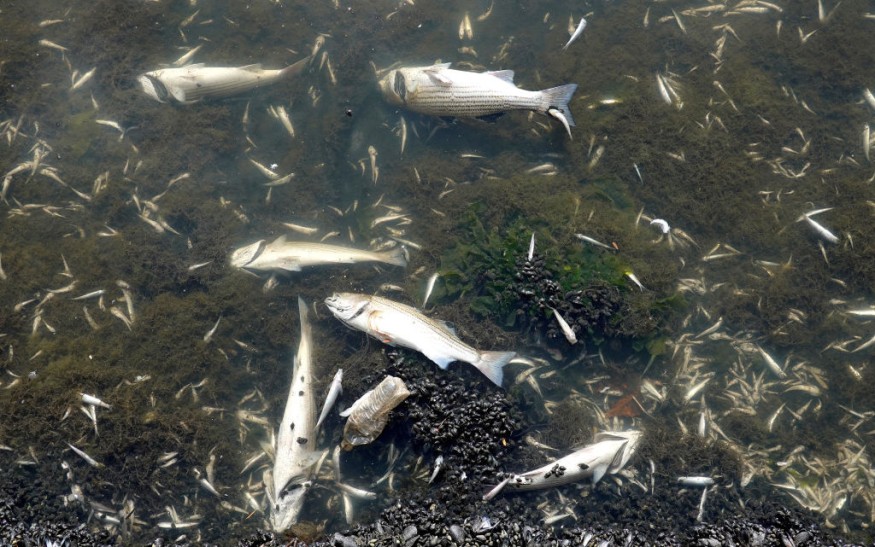A foul mess is made in Oakland Lake by the thousands of dead fish that wash ashore there. Experts believe the die-off is "like losing enormous redwoods" because of the algal bloom that turns the water into muddy muck.

Horrid View
A sickening stench has been seeping into the surrounding neighborhoods as thousands of fish carcasses have been floating up to the margins of the San Francisco Bay and the filthy top of Oakland's Lake Merritt.
Gruesome Die-Off
Bat rays, striped bass, sturgeon, anchovies, and clams that have died in large numbers are likely victims of an algal bloom that researchers are working to identify. Meanwhile, naturalists, joggers, local photographers, citizen scientists, and photographers have taken striking pictures of the die-off.
Damon Tighe, a biologist who records animals in Oakland, California's Lake Merritt, a unique environment that combines fresh and saltwater, remarked, "The diversity of life in Lake Merritt is just remarkable." Large breeding populations of herons, egrets, geese, and ducks live in the lake, along with various fish, crabs, and mollusks. In recent years, salmon, sturgeon, jellyfish, and leopard sharks have also visited the lake.
Algal Bloom

Heterosigma akashiwo, an algal bloom first observed at various locations throughout the San Francisco Bay and estuaries in late July, is most likely to blame for the die-off in the lake. According to Jon Rosenfield, a scientist with the San Francisco Baykeeper conservation organization, which has been monitoring the phenomenon, the alga is probably sucking up all the dissolved oxygen in the water, leaving the fish to perish. A poison that is also produced by Heterosigma akashiwo may be what killed the fish.
As a result, thousands of bloated fish carcasses arched up on the shoreline along with rosy, brown-tinged water. The San Francisco Bay Regional Water Quality Control Board reports that measurements of algal density taken on August 10 were the highest in more than 40 years.
Given that sturgeon are such enormous fish and are well-protected from numerous environmental hazards, the deaths of these fish in some areas of the San Francisco Bay have been particularly startling. The fish has a long lifespan.
Tighe compared it to losing "huge redwoods." "I don't think people fully get the importance - this is huge,"
Continuously Studying What Happened
Scientists are also running studies to discover what might have caused the bloom. According to Rosenfield, the cause is presumably wastewater treatment facility effluent water.
He added that researchers have been aware of this estuary's extremely high levels for decades. Many have even questioned why this hasn't happened yet; he added that current wastewater systems weren't built to filter out the phosphate and nitrogen that cause red tide algae blooms. "Society has overlooked this issue for far too long."
Officials have hypothesized that the drought that has affected the entire state may also have contributed to the decreased water flow from estuaries to the ocean.
Related Article : Dead Giant Leatherback Turtle May Have Been Killed by Pollution
For the latest similar news, don't forget to follow Nature World News!
© 2025 NatureWorldNews.com All rights reserved. Do not reproduce without permission.





